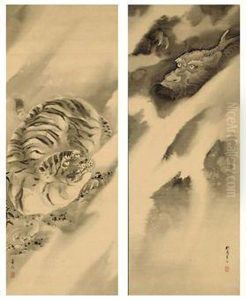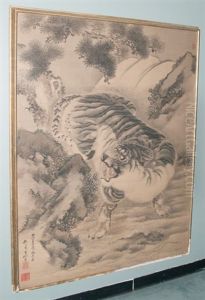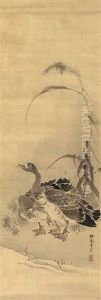Kishi Ganryo Paintings
Kishi Ganryo was a notable Japanese painter, born in 1802 and passing away in 1878. He was part of the Kishi school of painting, which played a significant role in the development of Japanese art, particularly during the Edo period (1603-1868) and into the Meiji period (1868-1912). The Kishi school is often associated with the Maruyama-Shijo school of painting, which emphasized nature and naturalistic scenes in artwork, blending Chinese scholarly painting traditions with Japanese techniques and aesthetics.
Ganryo's contributions to Japanese art are particularly notable for his mastery of both traditional Japanese and Chinese painting techniques. He was known for his skillful brushwork and his ability to capture the essence of his subjects with minimal strokes. His works often featured landscapes, birds, and flowers, showcasing his deep appreciation for nature's beauty. Ganryo's paintings not only reflect the artistic traditions of his time but also exhibit a unique style that distinguishes his work within the Kishi school.
Throughout his career, Ganryo was an influential figure, both as an artist and as a teacher. He played a crucial role in the transmission of traditional painting techniques to the next generation of artists, thus ensuring the continuation and evolution of Japanese painting practices. His legacy is evident in the works of his students and in the enduring popularity of the Kishi school's artistic principles. Ganryo's life and work provide insight into the rich cultural and artistic milieu of 19th-century Japan, a period of significant transition and modernization.


